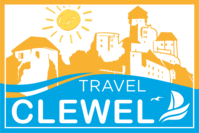Brugge - Excursions & Informations
Brugge (Bruges) is a historic city in Belgium and the capital of West Flanders with a population of about 120 thousand people. The city is located in the north of the country close to the North Sea coastline. One of the ten most beautiful cities in Europe. More than 8 million tourists come to Bruges every year to stroll along the embankments of the numerous canals that have made the city famous as the "Venice of the North" and to wander the winding streets reading the signs on the historic buildings. A visit to Bruges is almost a must on all our guided tours of the Benelux. The distance from Bruges to Brussels is 97 kilometers.
Areas of Bruges:
-
Minnewater - There is a bakery or grocery store on every corner. Also in this area is the wonderful Astrid Park.
-
The Begijnhof is special in that it is home to the Beguin Nuns (a religious movement that emerged in medieval Europe in the 12th century.
-
Burg - the city hall is located here, this area is full of museums, restaurants, chocolatiers, as well as jewelry stores.
-
St. Anna - here is the Kantcentrum Lace Museum, and there are several ancient churches around, which are several hundred years old. They contain such ancient Christian relics as the Blood of Christ and the relics of St. Vasily.
-
Grote Markt - the central area is famous for the Belfort bell tower, recognized by UNESCO as a World Heritage Site. This bell tower rings the bells once an hour. On Christmas Day, an ice rink is flooded in the square.
-
The station area is located southwest of the Grote Markt area. The train station and bus station are located here
Brugge (Bruges) from Above.
|
Brugge. Belgium.
From the History of Brugge
In the XII century, Bruges received the status of a city. Despite the fact that the Zvin river was covered with silt, the city created ports in Damme and Sluis. During this period, Bruges became the producer of the famous Flemish cloth, and buyers and traders from all over the world came here.
Bruges became the European center in the XIV century. During this period, Bruges became a warehouse for the northern European Hanseatic cities, and countries such as Italy, Germany and Spain opened their offices here.
Bruges City Tour.
|
Bruges. Belgium.
Despite the fact that in the XV century. the city fell into decay due to the decline in cloth production, architecture and art continued to flourish: they continued to erect buildings in the late Gothic style, and masters such as Jan van Eyck and Hans Memling continued to create masterpieces.
By the middle of the XIX century. Bruges became very impoverished and lost its influence, but in the 20th century the city became one of the most popular destinations for world tourism due to its rich medieval heritage. The opening of the port of Zeebrugge spawned many other industries. Today, the city also attracts tourists from all over the world thanks to the film "Bringing Down in Bruges".
Impressions of Brugge
|
Brugge. Belgium.
Bruges was one of the most important shopping centers in the region; most of the sights are associated with this page of the city's history. Anyone who comes on sightseeing tours in Bruges will certainly go to the medieval shopping area, inspect the famous Lakenhalle cloth rows and climb the Belfort bell tower, where an ancient staircase of 366 steps leads.
Heading south-east of Bruges from the shopping area along Breidel Street, you will come to the former administrative center of Bruges, where you will find one of the most beautiful Gothic town halls in the country - Stadhuis. Also, guests of the city who came to Belgium visit the Brugse Vrije administrative building built in 1531 and inspect the Heilige Bloed Basiliek - a Romanesque basilica that contains one of the most valuable relics of the Christian world - the blood of Christ, brought in the 12th century by the crusaders from the Holy Land.
Top 10 Attractions of Brugge
- Belfort Belfry
- Basilica of the Holy Blood
- Canals of Bruges
- Market Square
- Bruges Town Hall
- Free Bruges
- De Halve Maan Brewery
- Church of Our Lady
- Groininge Museum
- Memling Museum
What to eat and what to try in Brugge
- French fries. Surprisingly, right here
- French fries were invented. At the end of World War II, the Americans who were in France called this potato so, because thought that if the potatoes are in France, then they are French :)
- Chocolate. It was in Belgium that chocolate was first invented. Bruges is rightfully considered one of the main chocolate centers in Europe. The city even has a chocolate museum.
- Belgian waffles. Famous Belgian waffles are sold here at every turn.
Top 3 restaurants in Bruges:
- Little Siam: Sint-Salvatorskoorstraat 3, Bruges 8000, Belgium.
- Je Restaurant: Langestraat 83, Bruges 8000, Belgium.
- The Hobbit: Kemelstraat 8, Bruges 8000, Belgium.
Shopping in Bruges
- Sluis - Outlet located 20 minutes from Bruges, is the most popular outlet in the vicinity of Bruges.
- Streets with outlets, brand shops and shopping centers in Bruges:
- Gentpoortstraat, Katelijnestraat, Smedenstraat, Langestraat, Hoogstraat, Academiestraat, Philipstockstraat, Vlamingstraat, Smedenstraat, Noordzandstraat, Geldmuntstraat, St.-Amandsstraat, St.-Jakobsstraat, Zuidzandraatstraat, Mari
- L'Heroine - Belgian fashion brands are represented here.
- Quicke and Noteboom - items from leading brands in Europe and the USA are presented here.
Chocolate shops
Do not miss the opportunity to purchase incredibly delicious chocolate, it is sold in the following stores: Chocolatier Van Oost on Wollestraat Stef's at Breidelstraat Dumon on Simon Stevinplein
More informations see at the Official site of Brugge.
